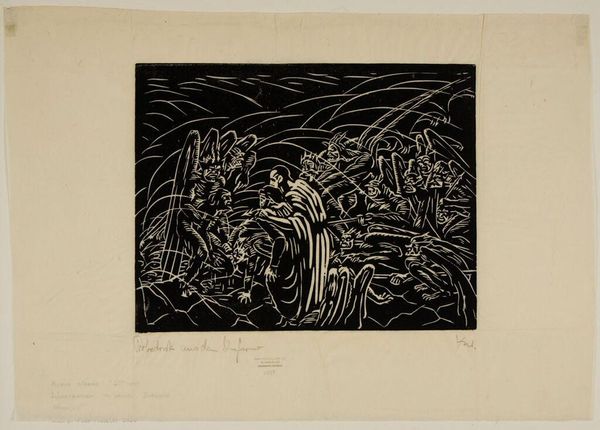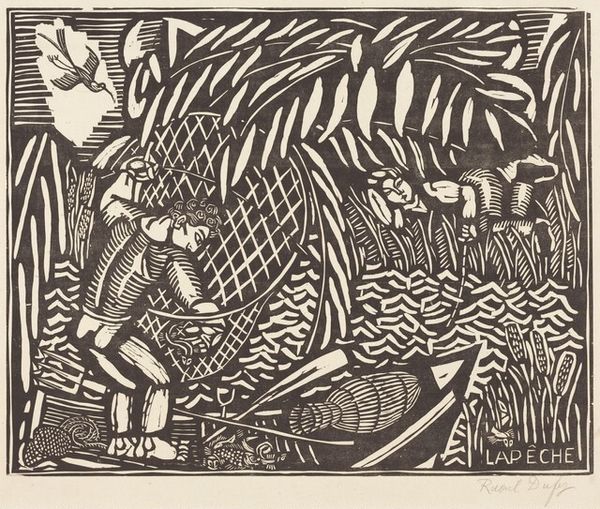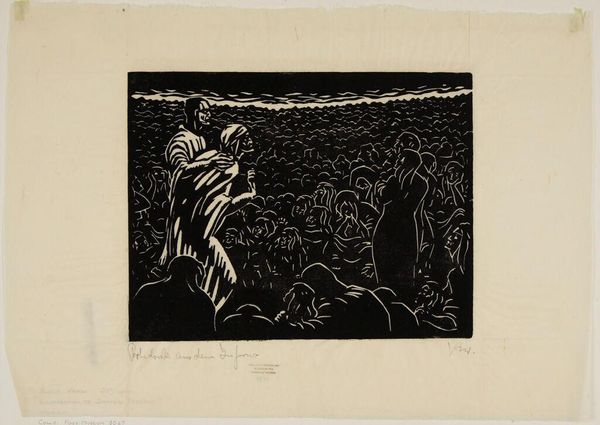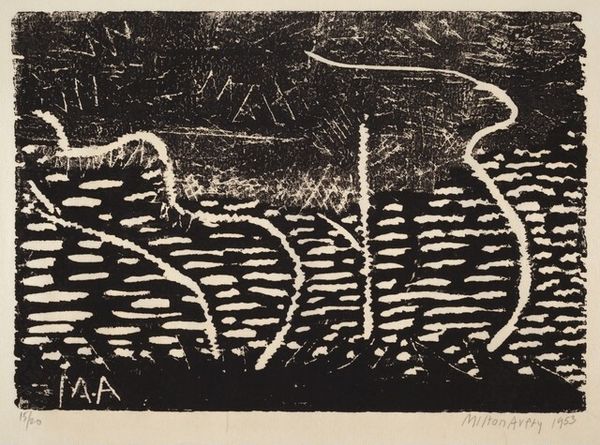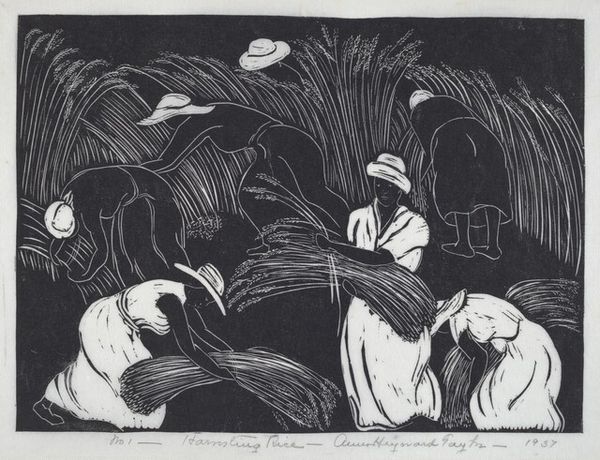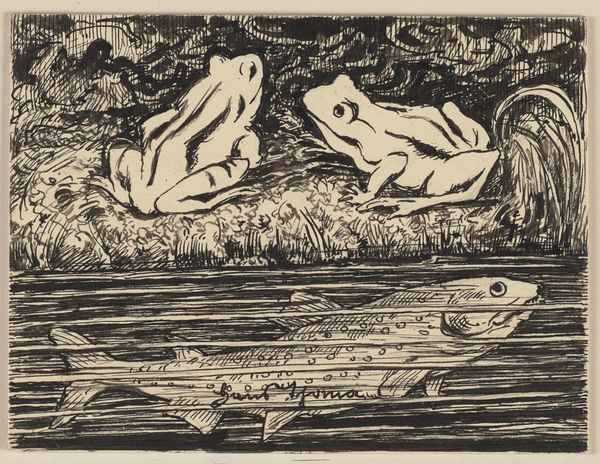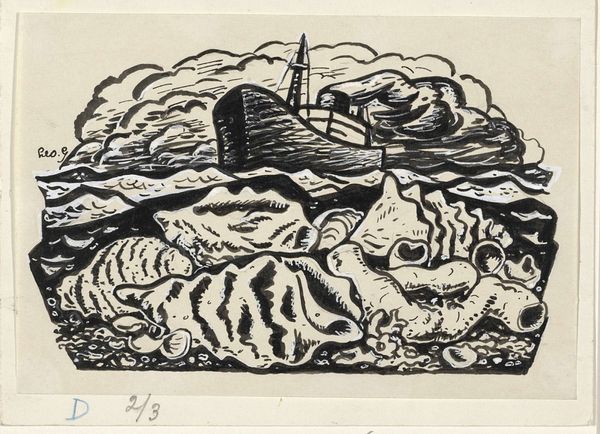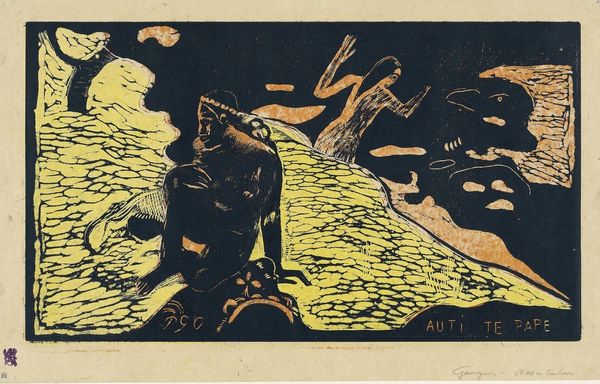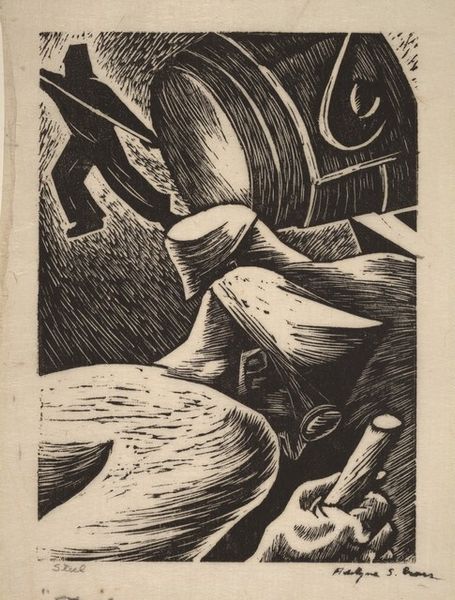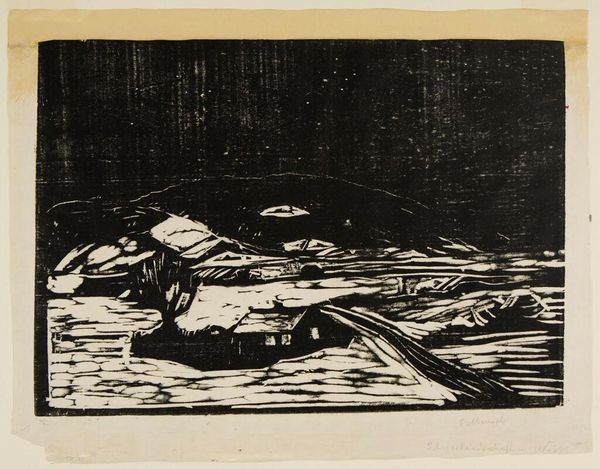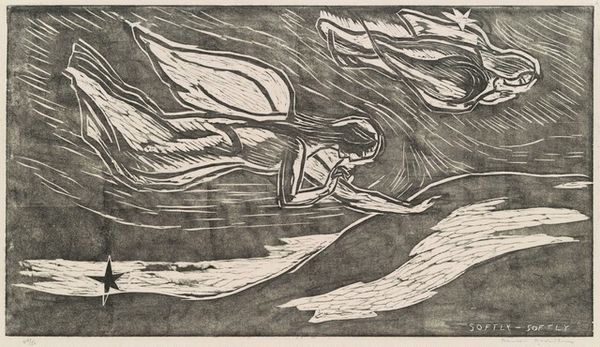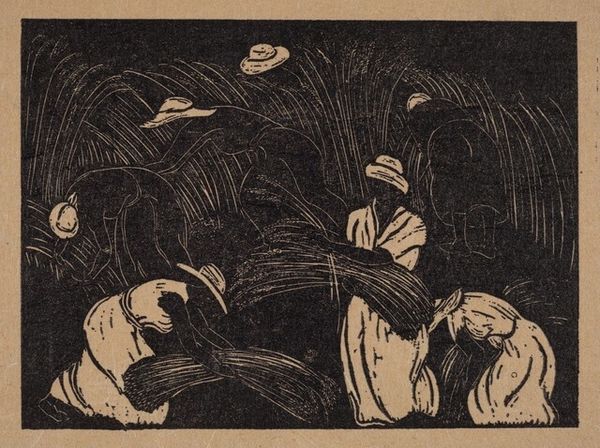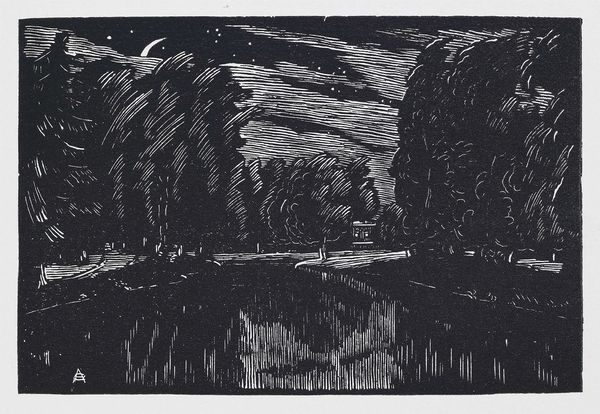
Copyright: CC0 1.0
Curator: Let's consider this print by Ernst Ludwig Kirchner, titled "Mountain Landscape with Cows," currently held in the Harvard Art Museums. Editor: It’s stark. The woodcut’s black and white contrasts are striking and, I must say, quite dramatic! You can almost feel the chill of the mountain air. Curator: Indeed. Kirchner, who lived from 1880 to 1938, embraced the woodcut as a raw medium, using it to express a certain primitivism and psychological intensity that mirrored the era's social upheaval. Editor: I see the labor in it—the cutting, the inking. It’s not just about the mountains; it’s about the process, the marks left by the tool, and what it means to depict nature through such deliberate, crafted means. Curator: And how that craftsmanship relates to our perception of landscape. Kirchner wasn't just depicting a picturesque scene; he was using the landscape to explore deeper anxieties about modernity and its effect on the human spirit. Editor: The simplicity and directness of the woodcut actually emphasize a complex relationship between humanity and landscape, between making and being. Curator: Well, it gives one a great deal to think about in terms of how the artist shaped our view of the natural world. Editor: Absolutely; and considering the materiality makes the message all the more palpable.
Comments
No comments
Be the first to comment and join the conversation on the ultimate creative platform.
